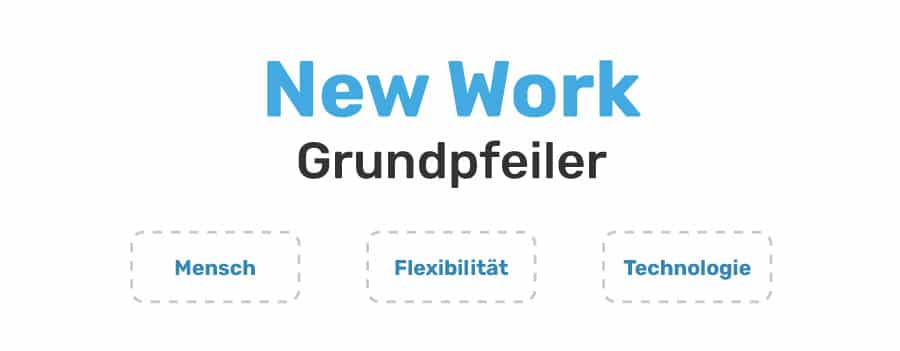New Work Learning
It's a Match: New Work + e-Learning = New Work Learning
We are currently in a state of change – socially, economically, technologically. This radical change has consequences for working life in particular. “New Work” is the buzzword of our time. We think: New Work only works in combination with well-done e-learning.
New Work is on everyone’s lips today and in virtually all corporate strategies. The word element “New” would suggest that it is an idea of our time. But this is not the case. As early as the 1970s, the Austrian Frithjof Bergmann developed the New Work concept in the USA. What emerged at the time as a response to the crisis in automobile factories is now a collective term for diverse forms of flexible and self-determined work organization. At its core, New Work is about the work people do serving them, not the other way around. Or as Bergmann, who died in 2021, summed it up in one of his last interviews with t3n magazine: “New Work is a different way of organizing work. The intention is to organize work so that it’s not something forced, but you do work that you really, really want to do.” For him, this is not necessarily about having fun at work, but rather about self-determination and meaning. In order to make this still rather abstract concept more tangible, we will take a look below at the pillars on which the New Work idea stands.
What's behind New Work
Since the term “New Work” is used almost inflationarily today and every company interprets it differently, it is impossible to summarize all ideas on a new work organization. Nevertheless, three basic pillars of New Work can be identified:
The focus is on people
As mentioned above, New Work puts people before work. The idea behind it: When people feel valued and can play to their personal strengths, a win-win situation is created. By doing what they are really passionate about, employees perform better, which in turn drives the company forward. Employees are not seen primarily as working beings, but as people with health, creative and social needs. Whether it’s collaborative painting classes, foosball tables or health offerings: Examples of how these needs are met by companies are a dime a dozen.
Flexibility at all levels
Rigid working time regulations, structures and hierarchies have no place in the New Work concept. It’s about flexibilization at all levels. Specifically, this concerns the flexibilization of working time (part-time, flexitime, individual working time models, etc.), work location (remote work, hybrid working, etc.), organizational structures (agile working, flat hierarchies, etc.) and also professional flexibilization (crowdsourcing, interdisciplinary collaboration, etc.). Employees should be free to decide how, where and when they work.
Technology relieves the burden on people
The digitalization push of the past decades has played a major role in shaping the New Work concept. The core idea today: technology should relieve people of routine tasks and create more space for creative, i.e. deeply human, activities. In addition, digital tools make flexible working possible in the first place and create the basis for contemporary training opportunities. Speaking of continuing education …

These three pillars of New Work are similar to those of e-Learning and also to our e-Learning philosophy. This is hardly surprising; after all, New Work and e-learning belong firmly together. We would even go a bit further: e-learning is an essential prerequisite for the success of New Work. It is therefore entirely appropriate to speak of New Work Learning.
Our proposal: New Work Learning
In the New Work concept, work and continuing education are no longer separate spheres, but are inextricably linked. Generations Y and Z, who are slowly but surely conquering the labor market, are hungry for further education and demand contemporary offerings. This hunger for continuing education can be satisfied by companies integrating e-learning, which also deserves this definition, into everyday work and making New Work Learning possible. In our opinion, New Work Learning is the logical consequence resulting from the New Work requirements and the demand for personal training of current and future employees. But what exactly is meant by this?
New Work Learning means the permanent, time- and location-independent availability of accurate learning opportunities. This does not mean digitizing documents, forms, etc. and making them available in PDF format on the intranet. New Work Learning is about much more. New Work Learning focuses on people as learners, gives them maximum flexibility in the learning process, and makes learning experiences possible with the help of the latest technical and media standards. Or to put it another way: New Work Learning makes continuing education a natural companion in working life.
Our e-learning formats and best practices provide you with concrete examples for the implementation of New Work Learning. There, we use real case studies to show how New Work Learning can succeed.
